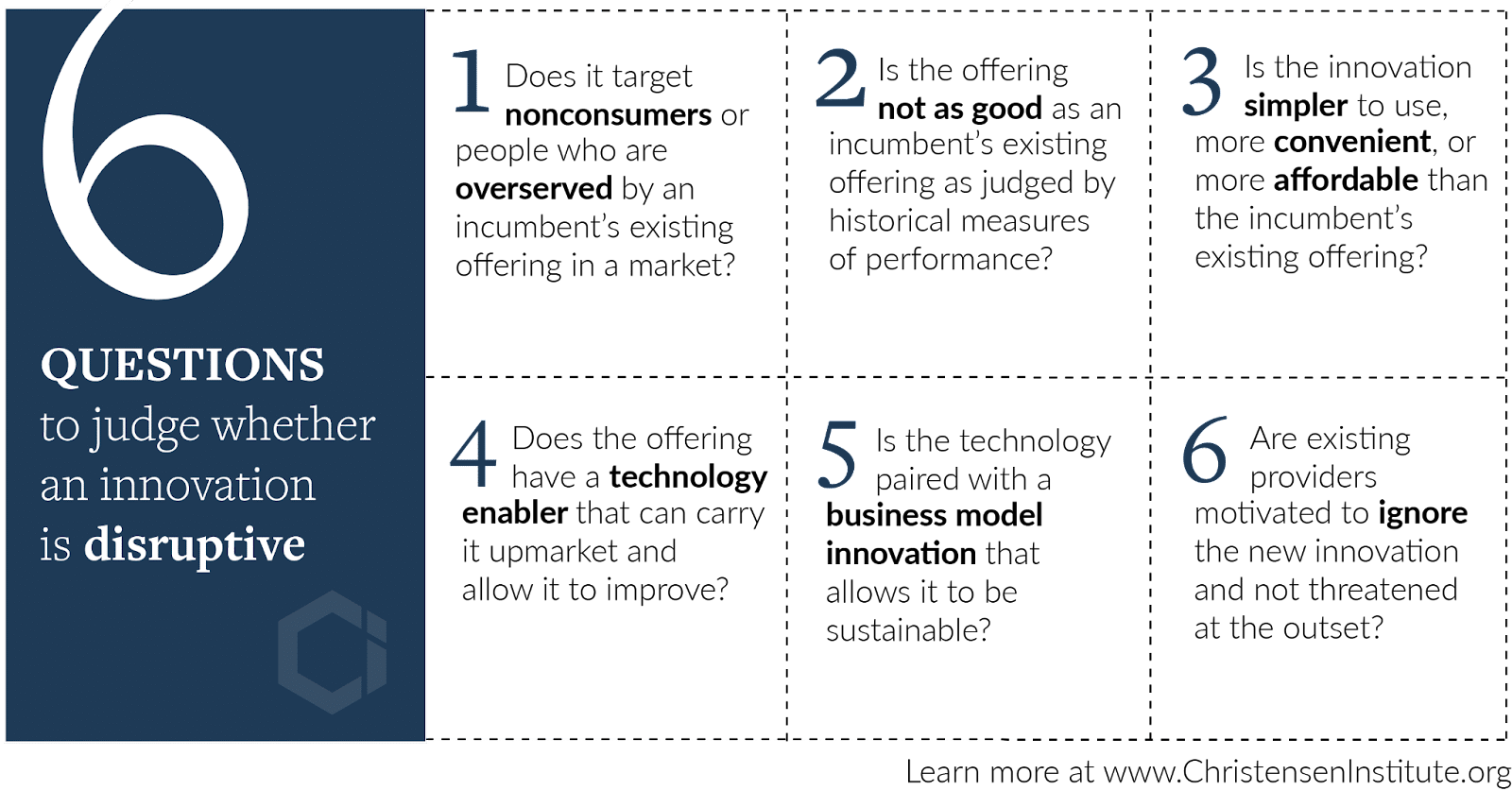January is here, and with the turn of the calendar, we’ve either already seen, or are anticipating, our favorite thought leaders’ predictions. What will the year ahead hold in store for our industry?
In this “predictions” piece, I take a different perspective. It’s not about what I think will happen in 2024, but instead what theories of disruptive innovation would suggest. Without further ado, let’s dive into three trends, plus a bonus, to look for in the year to come.
1. Retail giants (Amazon, Walmart, CVS, Best Buy, etc.) won’t disrupt health care, despite claims to the contrary.
To be clear, these retail giants will continue to launch products and services within the health and wellness realm, and they are formidable competitors. However, as we’ve discussed before, the term “Disruption” is often misunderstood and misused. Disruptive Innovations are not breakthrough technologies that make good products better. Rather, they are simple, affordable innovations that replace expensive, complex systems and products, increasing accessibility and affordability for all.
Will these giants continue to compete in the health care marketplace in 2024? Yes. But are they likely to disrupt incumbents’ offerings? No.
How can we be sure? The Christensen Institute has a 6-question test that enables us to evaluate a product or service’s disruptive potential. You can refer back to this resource throughout the year to assess whether or not something is disruptive.

Some may be thinking, “What about Amazon’s move to offer One Medical services to Prime members? Surely this is disruptive.” For more on why this isn’t a disruptive innovation, you can see my analysis here. Now, just because something isn’t disruptive doesn’t mean it isn’t good. As I note in the analysis, Amazon may well “win” with this offering if they are able to better serve consumers’ Jobs to Be Done than existing offerings in the marketplace.
So, while retail giants may not “disrupt” health care this year, it’s quite possible they will launch services that better serve consumer or customer Jobs. And that’s something to keep on your radar.
2. We will see more “good money” than “bad money” investments.
Early in 2023, I wrote about the role of venture capital investments in health care. In that piece, I detailed the Good Money Bad Money theory. In short, in an organization’s early days, “good money” is impatient for profit but patient for growth. “Bad money” is the opposite. It’s patient for profit, but impatient for growth.
In the funding furry that surrounded digital health during the COVID-19 pandemic, we saw more “bad money” investments than good. As a result, many startups were pressured to grow quickly and scale solutions before proving profitability. In the industry, this resulted in many startups soaring to great heights, only to meet their demise months later.
In 2022 and 2023, we saw a course correction in health care investments. This trend will continue into 2024, with funders focusing more on good money investments. That is to say, they will look for organizations that can prove their business model is both profitable and sustainable prior to scaling it.
3. Investments in women’s health will increase to address the growing maternal health crisis and serve unmet consumer demand.
Maternal health is in crisis in the US. We’ve covered this topic in depth, as have many, many others. With the White House’s launch of the Initiative on Women’s Health Research, and the CDC’s determination that 84% of maternal health deaths were preventable, there is a renewed focus on improving health outcomes for women. In recent years, we’ve seen more funding go into women’s health, and this trend will expand in 2024.
Recent research from Deloitte highlights that women’s out-of-pocket medical costs outweigh men’s for every age group from 19-64. And this excludes pregnancy related services. Women have long been under-represented not only in clinical trials but also as the basis of design for new offerings. Companies like Maven were early to the field to change this status quo. And we are continuing to see new entrants like Caraway, Midi Health, and a number fertility-focused startups seek to fill the gaps in the market and serve underserved Jobs to Be Done.
4. Bonus: AI will fall from the peak of inflated expectations
If you are familiar with Gartner’s hype cycle, you likely agree that generative AI’s impact on health care is currently located at the “peak of inflated expectations.” This year, it will likely fall from the peak, down towards the trough of disillusionment as we determine how to best leverage its capabilities within different industry business models.
To be clear, it holds potential to disrupt certain aspects of the industry when paired with a business model innovation. But theory states that technology alone does not disrupt. However, exactly how it will be leveraged as an enabling technology for disruption is still up for debate.
When we look back 12 months from now, what do you think we’ll see in hindsight that we didn’t see from our vantage point today? I’d love to hear from you below, or via email.


